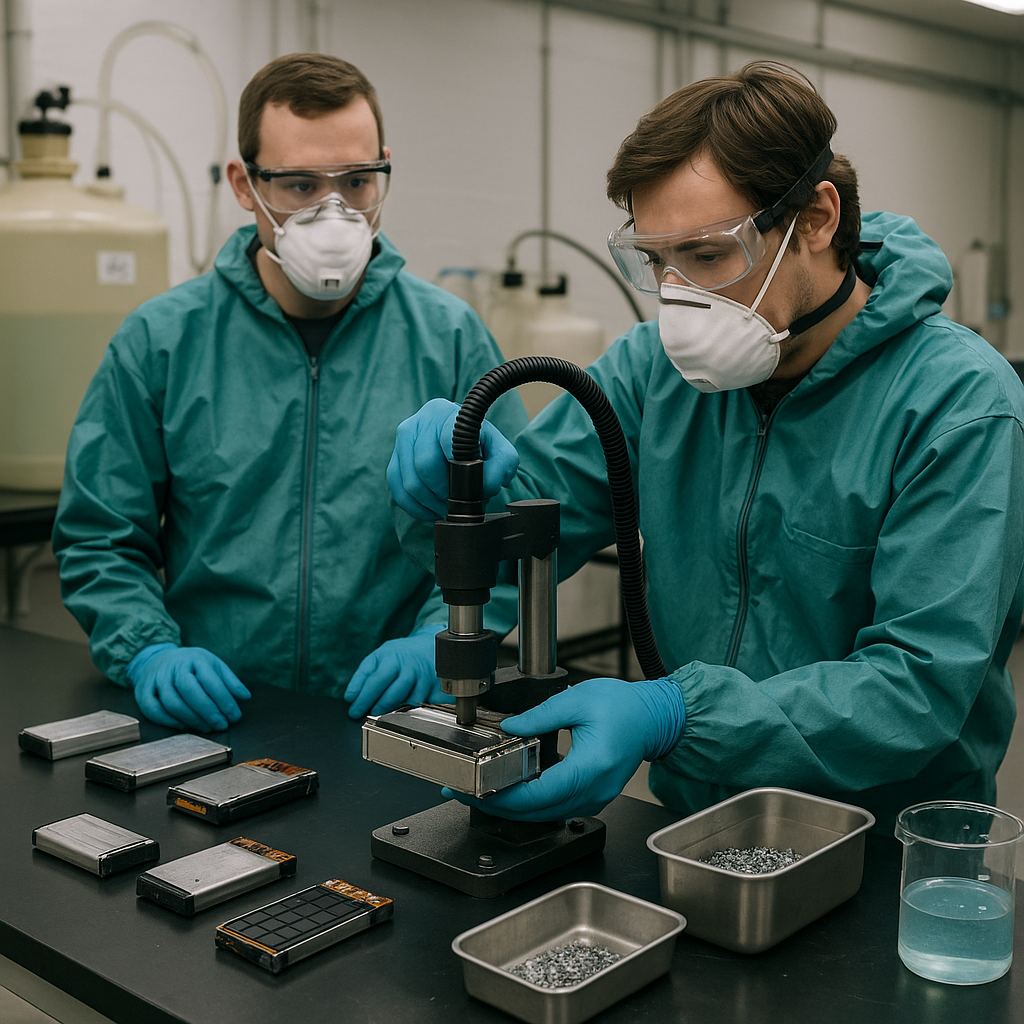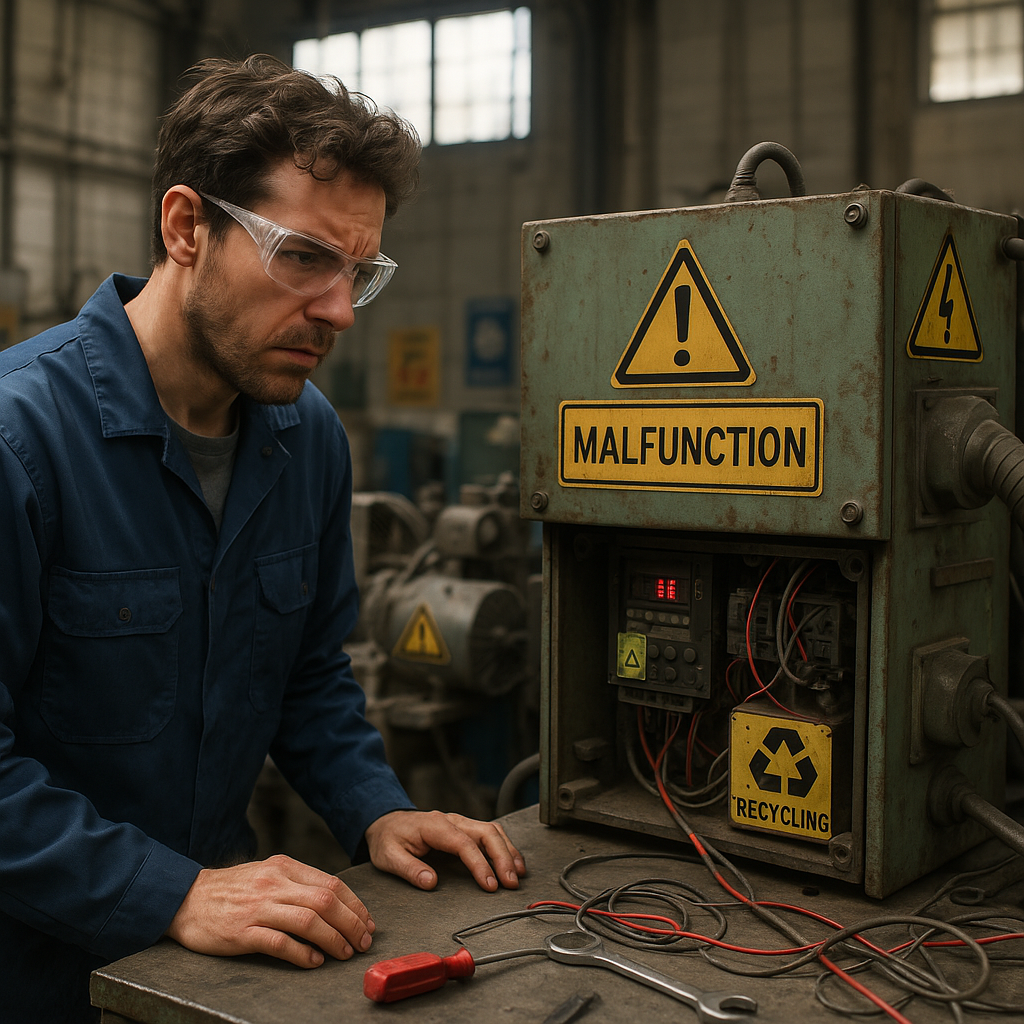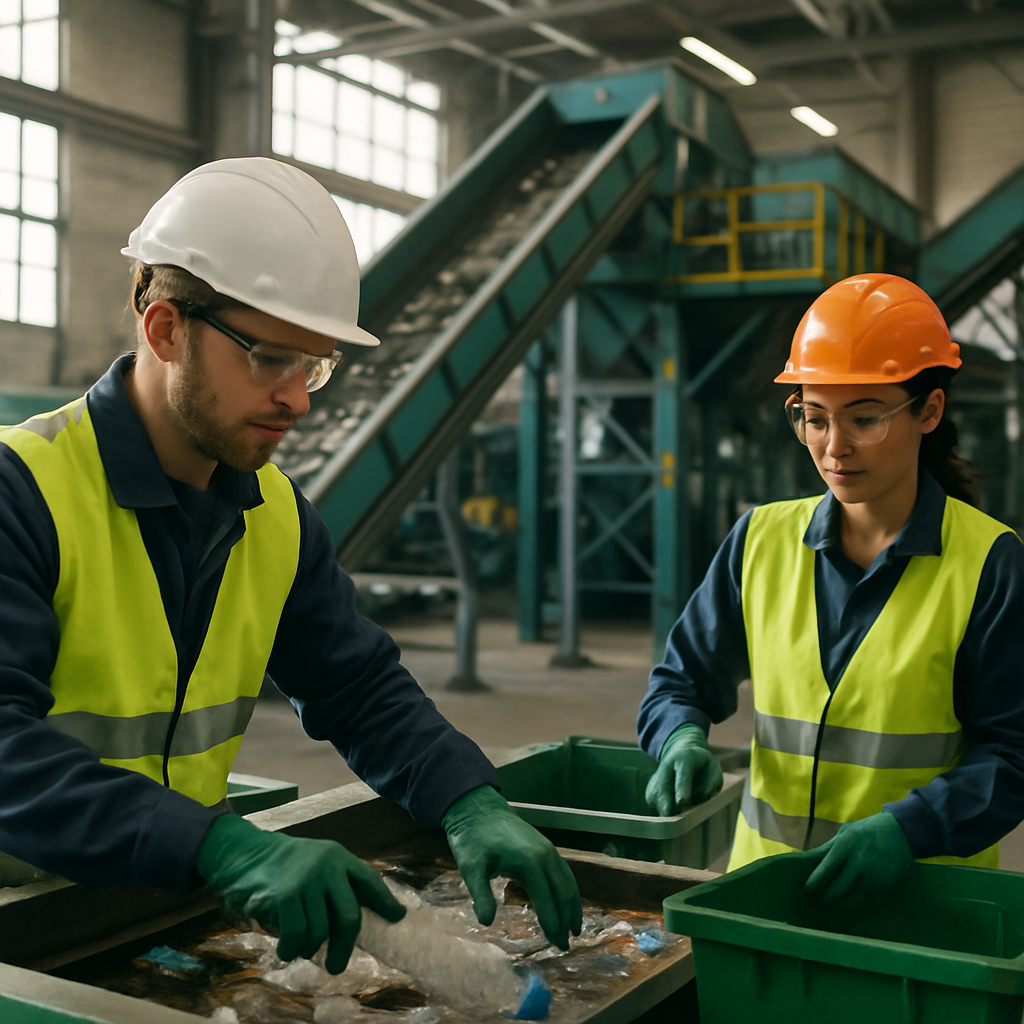5901 Botham Jean Blvd, Dallas, TX 75215
Hydrometallurgical Recycling Process: Steps, Benefits, Challenges, and Battery Applications
September 29, 2025The hydrometallurgical recycling process represents a significant advancement in sustainable waste management. This method utilizes water-based solutions to extract and recover valuable metals from spent lithium-ion batteries and other waste materials, without requiring extreme temperatures.
Fundamentally, hydrometallurgy operates through a series of chemical reactions in liquid environments. It starts with the leaching phase, where acids or other solvents dissolve metals from crushed battery components, resulting in a metal-rich solution that can be further processed.
Given the increasing number of lithium-ion batteries reaching end-of-life—from smartphones to electric vehicles—hydrometallurgical recycling offers a viable solution to recover critical materials like lithium, cobalt, and nickel. This approach generally consumes less energy and produces fewer emissions than pyrometallurgical methods, making it an increasingly vital technology in developing a circular economy for battery materials.
What Are the Key Steps in Hydrometallurgical Battery Recycling?

Hydrometallurgical recycling is a highly effective method for recovering valuable metals from spent batteries. It is favored for its ability to extract high-purity metals with lower energy requirements and emissions compared to traditional pyrometallurgical methods. This approach involves three essential steps that convert battery waste into valuable resources.
Step 1: Leaching – Dissolving Valuable Metals
The first crucial phase in hydrometallurgical battery recycling is leaching, where metals are systematically dissolved from battery components into a solution. During this process, crushed and sorted battery materials (often referred to as black mass) are introduced to carefully selected solvents that selectively dissolve target metals.
Different leaching agents have specific roles in metal extraction. Inorganic acids like sulfuric acid, hydrochloric acid, and nitric acid are commonly used due to their effectiveness in dissolving metals like cobalt, nickel, and lithium. Some facilities are exploring more environmentally friendly alternatives such as organic acids or deep eutectic solvents to achieve similar results with reduced environmental impact.
The efficiency of this step relies on factors like temperature, concentration of the leaching agent, particle size, and contact time. Under optimal conditions, leaching can yield recovery rates exceeding 90% for key elements.
Step 2: Solution Purification – Removing Impurities
After metals are dissolved, the resulting solution contains target metals along with impurities that must be removed. This phase focuses on purifying the leach solution using various techniques:
Solvent extraction is the most widely used method, where organic solvents selectively bind with specific metal ions, effectively separating them from impurities. This process is especially useful for isolating cobalt and nickel. Chemical precipitation is another common approach, where specific reagents cause metals or impurities to form solid precipitates that can be filtered out.
Additional methods include ion exchange, where specialized resins adsorb certain metal ions, and filtration to remove remaining solid particles. The aim is to create highly purified metal solutions for the final recovery stage.
Step 3: Metal Recovery – Obtaining Pure Metals
The final stage transforms purified metal solutions into usable metal products. Electrowinning is the primary technique here, where an electric current passes through the metal-rich solution, causing metal ions to deposit as solid metal on cathodes. This process can produce metals with purities exceeding 99%.
For metals not suitable for electrowinning, chemical precipitation is often employed. Adjusting pH levels or adding reagents precipitates metals as hydroxides, carbonates, or other compounds that can be processed into pure metals or used directly in new battery production.
Additional recovery methods include crystallization for producing metal salts like lithium carbonate and cementation, where a more reactive metal precipitates a less reactive one from the solution.
Benefits of the Hydrometallurgical Approach
The three-step hydrometallurgical process offers significant advantages for battery recycling. It allows for the selective recovery of multiple valuable metals, including lithium, cobalt, nickel, manganese, and copper with high efficiency. Modern facilities can achieve recovery rates of up to 95-99% for critical metals like cobalt and nickel.
This process operates at lower temperatures than pyrometallurgical methods, resulting in reduced energy consumption and lower greenhouse gas emissions. Additionally, the precise control of chemical conditions enables high-purity metal recovery, making the materials suitable for reuse in new battery manufacturing.
As battery technologies evolve, hydrometallurgical recycling processes are continuously refined to handle new chemistries and improve recovery rates, supporting a more circular approach to battery materials.
What Are the Environmental Benefits of Hydrometallurgical Recycling?
Hydrometallurgical recycling offers a significant environmental improvement over traditional pyrometallurgical methods. Numerous studies confirm that hydrometallurgy generates much lower environmental impacts while providing superior recovery capabilities for critical raw materials from lithium-ion batteries.
The most notable environmental advantages arise from energy consumption patterns. Pyrometallurgical methods require extreme temperatures (1200°C-1600°C) to process battery materials, which leads to substantially higher energy demands. In contrast, hydrometallurgical processes operate at much lower temperatures, resulting in significantly reduced greenhouse gas emissions. Research indicates that pyrometallurgy can produce up to 361 tons of direct CO2 emissions per kg/t of metal, whereas comparable hydrometallurgical methods produce negligible emissions under the same conditions.
In addition to reducing emissions, hydrometallurgical recycling excels in resource recovery. While pyrometallurgical smelting can recover only a few metals like cobalt and nickel, hydrometallurgy efficiently extracts a wider range of valuable materials, including lithium, aluminum, and manganese. This comprehensive recovery capability is crucial for addressing supply chain pressures on these increasingly essential materials. Comparative life cycle assessments consistently show that using hydrometallurgically recycled materials in battery production has lower environmental impacts than using virgin materials.
Advanced hydrometallurgical systems offer extra environmental benefits through their potential for closed-loop operation. These systems can be designed to minimize chemical consumption with reagent recycling and reduce waste through improved separation techniques. Some implementations achieve zero wastewater discharge and can utilize renewable energy sources like solar power, making them essentially self-sufficient operations. This combination of lower energy requirements, reduced emissions, and more complete material recovery makes hydrometallurgical recycling a significantly more sustainable approach to battery material reclamation.
What Challenges Does Hydrometallurgical Recycling Face?

Hydrometallurgical recycling offers numerous advantages for recovering valuable metals from lithium-ion batteries, but it faces several significant challenges that impact its widespread implementation. These hurdles include chemical management concerns and economic and environmental considerations.
Chemical Reagent Management
One primary challenge in hydrometallurgical recycling is the consumption of expensive reducing agents and substantial quantities of acids and alkalis. This increases operational costs and leads to the generation of highly saline organic wastewater. The process requires careful handling of chemical reagents to maintain safety standards and prevent environmental contamination.
The chemicals used in leaching—such as sulfuric, hydrochloric, and nitric acids, often supplemented with hydrogen peroxide—must be precisely controlled to optimize metal recovery while minimizing reagent consumption. Research indicates that even when selectively leaching metals like lithium, carefully regulating proton acid concentration is necessary to prevent unintended dissolution of other components.
Process Complexity and Efficiency Variations
Hydrometallurgical recycling involves multiple complex stages, including mechanical pre-treatment, leaching, purification, and separation. This complexity extends processing times and demands high technical expertise. The multi-step nature of the process can result in efficiency losses at each stage.
Metal recovery efficiency varies significantly with battery chemistry. For instance, the binding mechanism of PVDF (polyvinylidene fluoride, the organic binder in batteries) differs markedly between cathode types. In LFP (lithium iron phosphate) batteries, PVDF interacts more weakly with aluminum foil than in NCM (nickel cobalt manganese) batteries, affecting separation efficiency even with identical recycling methods.
Wastewater Generation and Environmental Impact
Generating wastewater is a substantial environmental challenge. Methods involving acid/base/oxidative dissolution consume considerable concentrated chemicals and produce large quantities of wastewater, adding to recovery costs. The resulting effluent requires proper treatment before discharge, creating additional processing steps and expenses.
Some hydrometallurgical approaches may introduce impurities like iron (from Fenton oxidation) into the system, interfering with subsequent metal extraction. Cross-contamination during mechanical pre-processing, such as aluminum chips mixed with cathode material particles, can adversely affect metal extraction and separation.
Technical Limitations and Material-Specific Issues
The strong binding effect of PVDF poses a technical challenge for efficient material separation. Even after physical crushing and sieving, cathode particles may adhere to aluminum foil surfaces, causing quality loss and challenges in subsequent processing steps.
In certain batteries like LFP, the high energy consumption of alternative treatment methods often reduces profit margins for lithium extraction while increasing carbon emissions. Although hydrometallurgy is preferred, introducing aluminum into the liquid phase before precipitation separation complicates metal separation steps.
The chemical stability of PVDF, which remains on material surfaces after separation, can negatively impact both the environment and leaching efficiency in metal recovery, necessitating additional treatments.
Ongoing Research to Address Challenges
Research is focusing on developing more environmentally friendly leaching agents to reduce the ecological footprint of hydrometallurgical processes. Selective leaching techniques are being refined to target specific valuable metals while minimizing unwanted material dissolution. Alternative approaches like organic trifluoroacetic acid (TFA) as a leaching reagent show promise for separating cathode materials and aluminum foil with less environmental impact.
Innovations in process design are also emerging, such as the automatic separation of carbon/iron phosphate residue from aluminum foil after selective lithium extraction, helping overcome binding challenges in traditional methods.
Conclusion: The Future of Hydrometallurgical Battery Recycling

Hydrometallurgical recycling is at the forefront of sustainable solutions for the growing lithium-ion battery waste challenge. This chemical-based approach offers superior recovery rates of valuable metals while consuming less energy than traditional methods. The technology continues to advance, promising greater efficiency in material extraction and reduced environmental impact in the coming years.
As electric vehicle adoption accelerates globally, effective battery recycling systems become increasingly critical for environmental protection and resource conservation. Hydrometallurgical processes create a truly circular economy for battery materials, reducing dependence on raw material extraction while recovering essential components like cobalt, nickel, manganese, and lithium at higher rates. For expert guidance on implementing sustainable recycling solutions for your battery waste streams, contact Okon Recycling at 214-717-4083.
